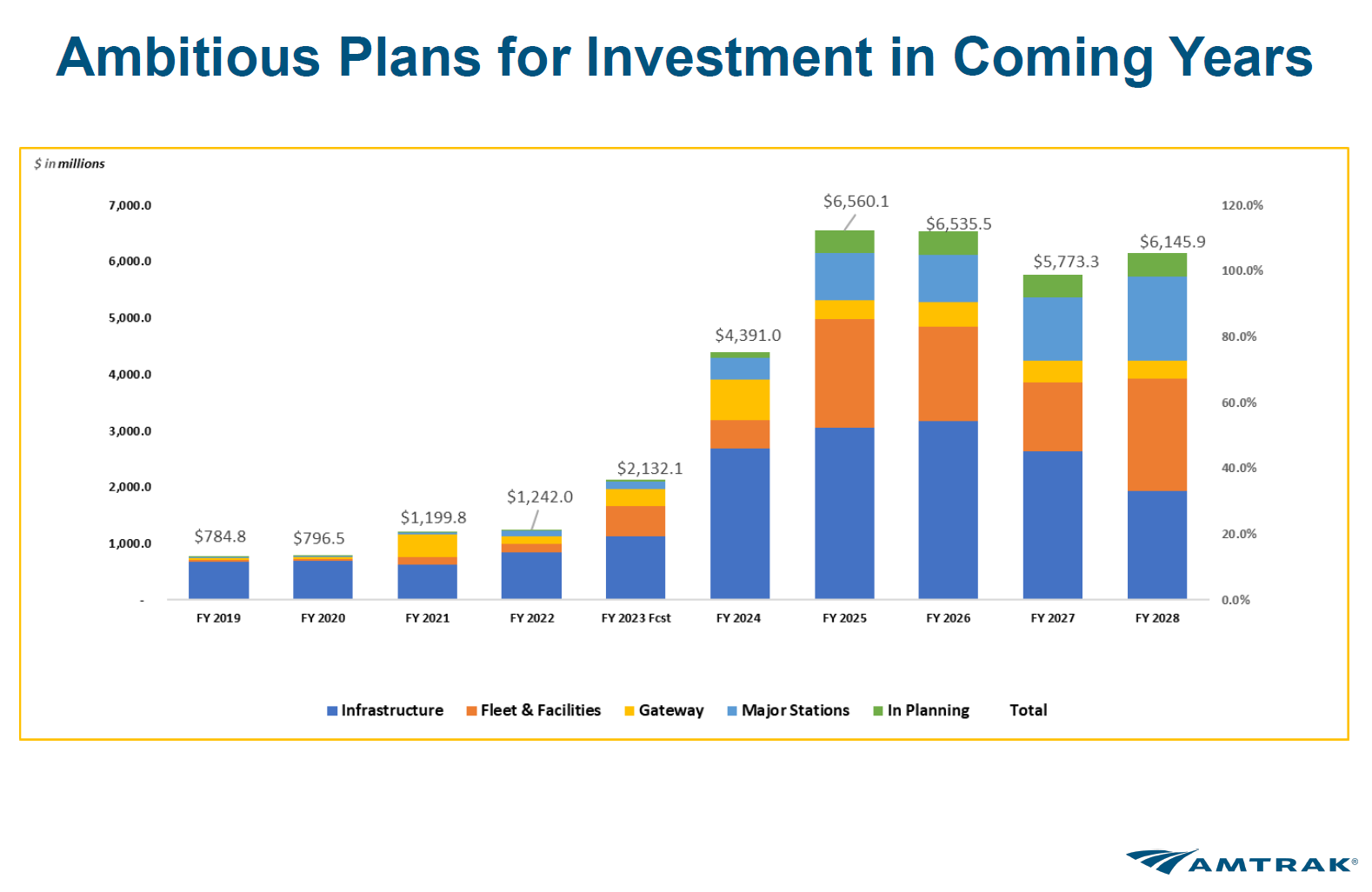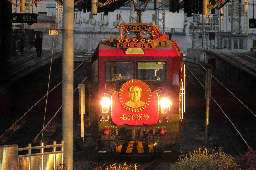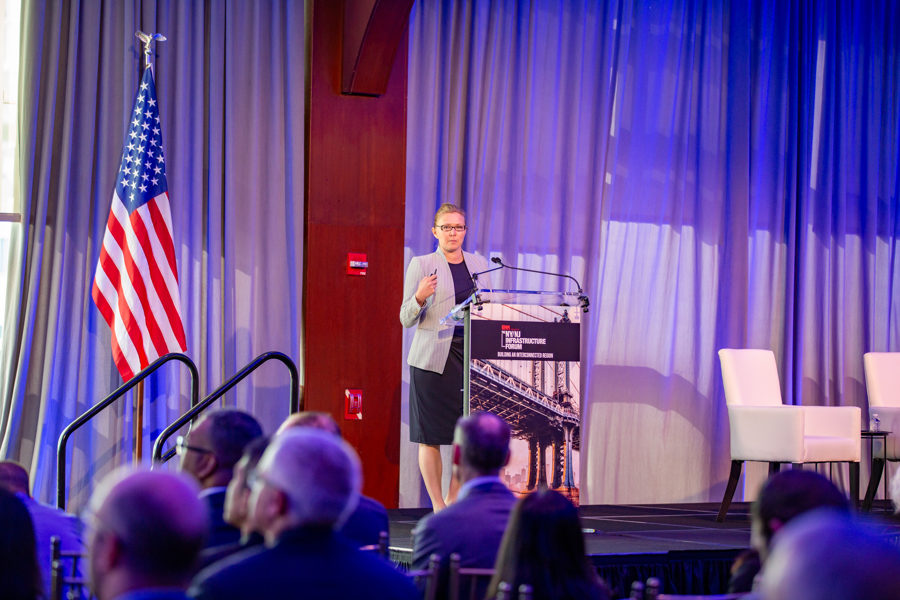To double our ridership means we need to invest about $50 billion into our infrastructure, our maintenance facilities and our fleet nationwide,” said Laura Mason, Amtrak executive vice president of capital delivery.
Mason—who revealed details of Amtrak’s upcoming program at ENR’s second annual NY/NJ Infrastructure Forum held on Sept. 15 in Manhattan—is also doubling the size of her department to handle the flood of project design and delivery to come. The rail operator received $66 billion under the 2021 federal infrastructure law—the largest investment Amtrak has received since its founding more than 50 years ago.

The rebuild, expected to take until 2032 to complete, will modernize and expand 1.1 miles of track and boost train speeds from 60 mph to 90 mph.
A decade to do a bridge replacement.

Worth noting that it looks like none of this money will go to RoW acquisition or projects outside the NEC.
Honestly? Good. The NEC is the only thing Amtrak seems to know how to do, so might as well have Amtrak learn how to do it well
The main reason it's better than other Amtrak segments is because Amtrak owns the rail.
 Amtrack is getting their largest investment in 50 years.
Amtrack is getting their largest investment in 50 years. On high speed maglev trains like they have in Asia?
On high speed maglev trains like they have in Asia? well it's the largest investment...that's the press release.
well it's the largest investment...that's the press release. that means modern transportarion right?
that means modern transportarion right?It's better for them to build a robust network of conventional rail service than a couple of flashy HSR lines but given the current state, any improvement is welcome
I can't help but wonder if this might result in potential future expansion of lines/routes. They seem to be emphasizing operational efficiency e.g. with the callout to cleaning, inspection, and maintenance as well as emphasizing addressing deficient or bottlenecking infrastructure - at the very least, this should make it more feasible to run more lines over current service area.






